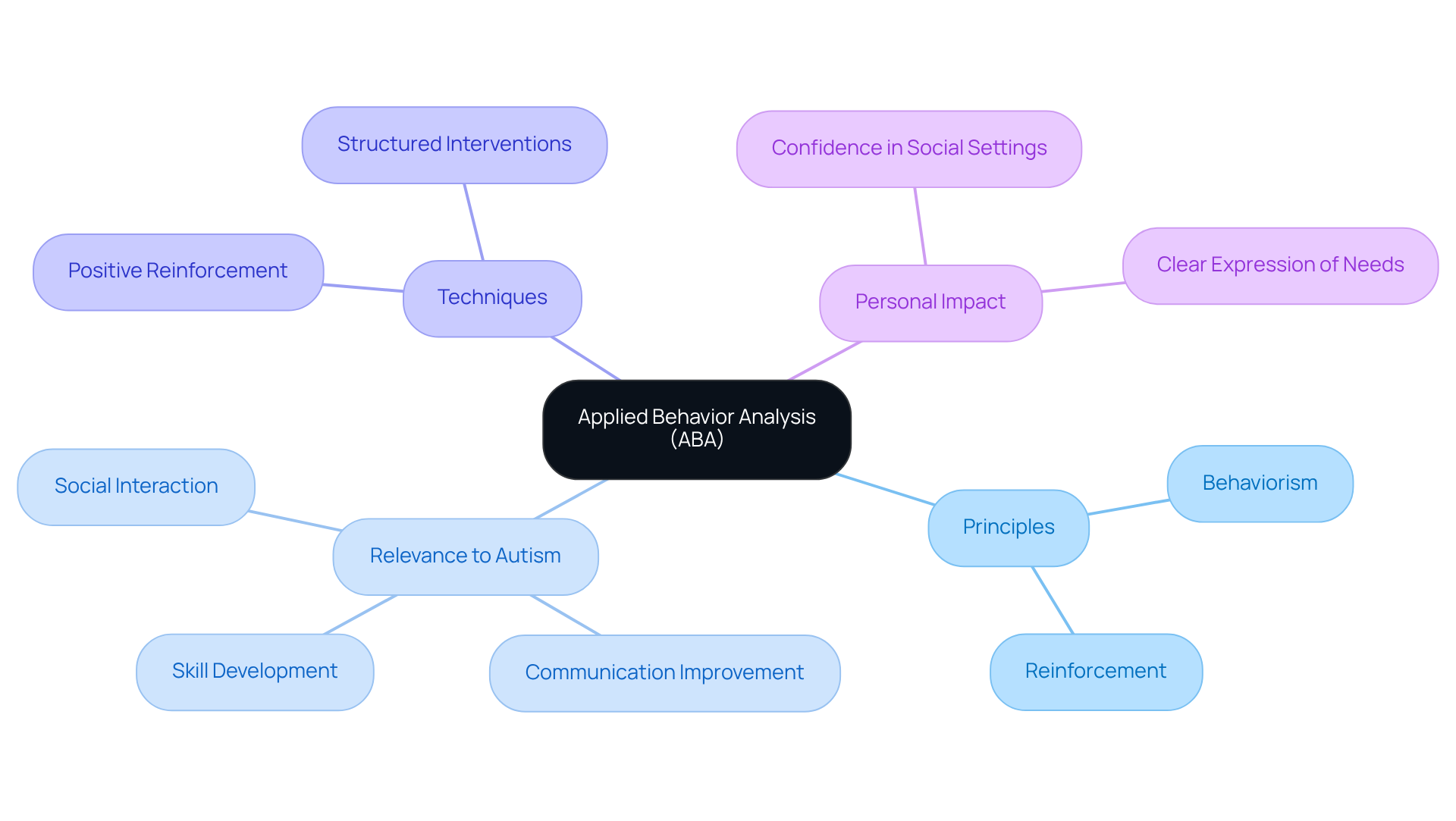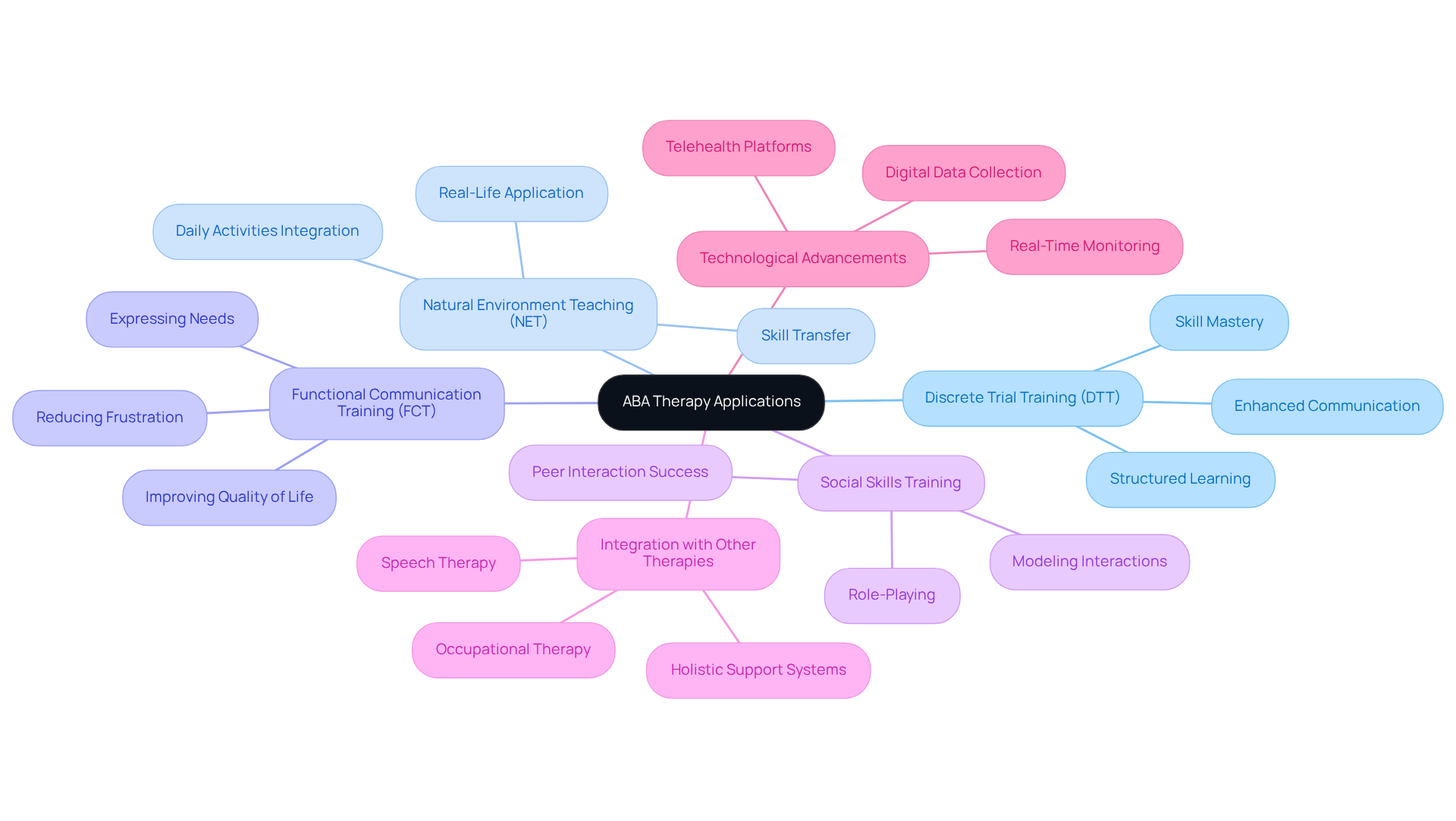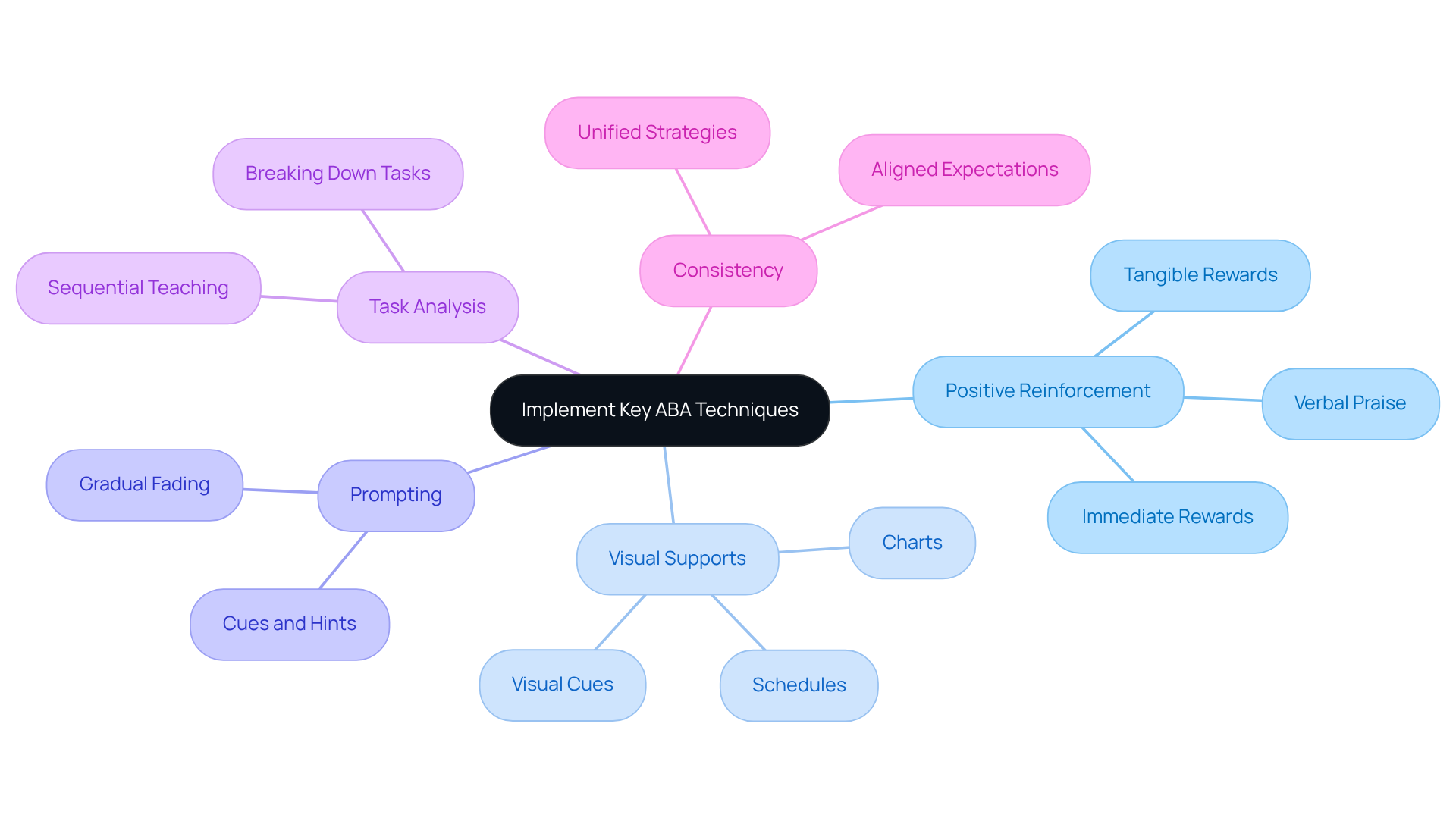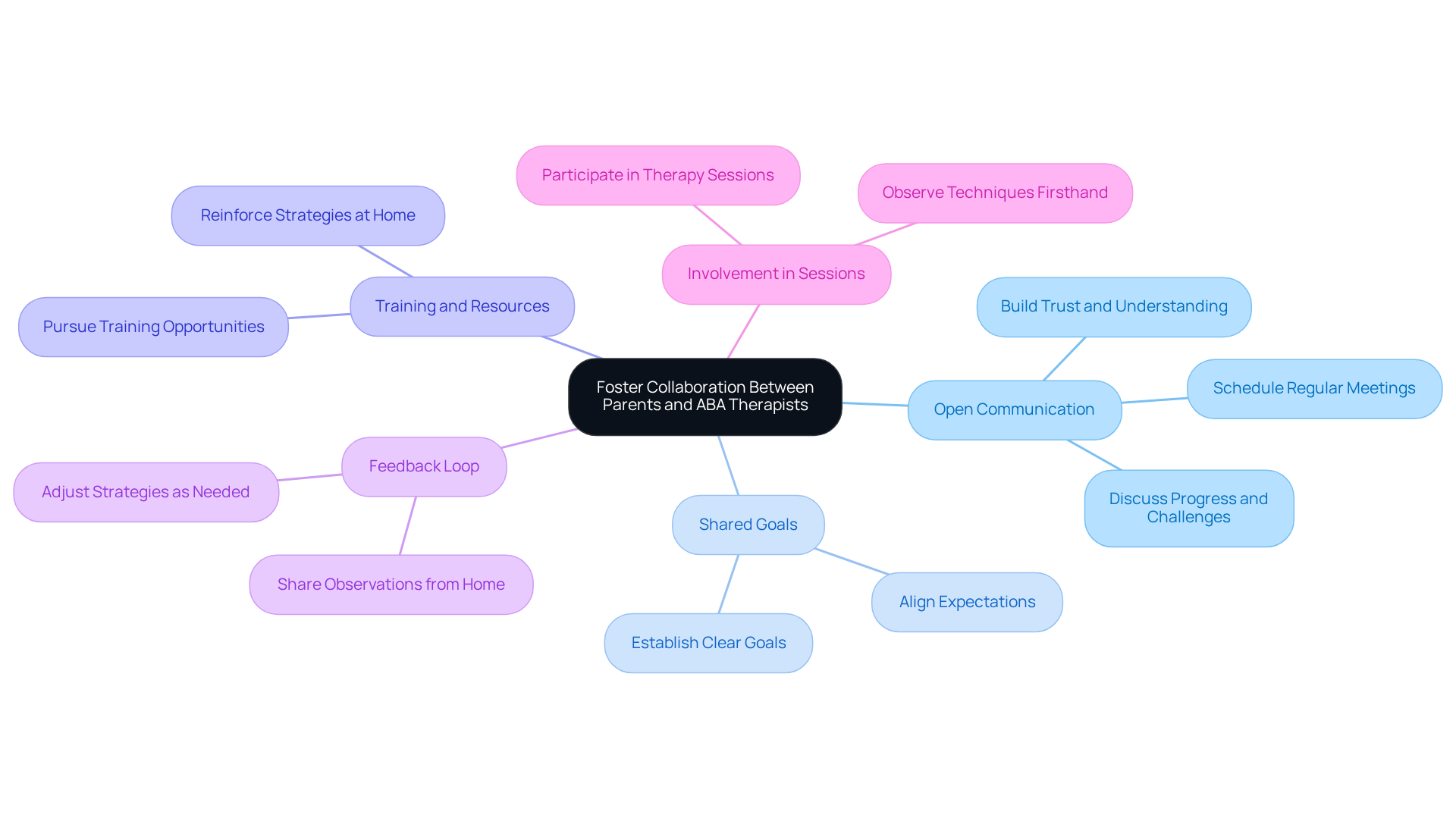Overview
This article delves into the compassionate mastery of Applied Behavior Analysis (ABA) as a means to effectively support individuals with autism. ABA is not just a method; it’s a nurturing, structured approach that employs techniques such as positive reinforcement, discrete trial training, and functional communication training. These strategies are designed to enhance essential skills, improve communication, and foster social interactions, ultimately leading to a significant uplift in the quality of life for those affected by autism.
As parents, understanding the transformative power of ABA can be both enlightening and empowering. Imagine witnessing your child thrive, gaining skills that open doors to new opportunities. The journey may have its challenges, but with the right support, the rewards are profound.
Through ABA, we can create an environment where individuals with autism feel understood and supported. This approach not only helps in skill development but also nurtures meaningful connections with others. As you explore this path, consider the resources available to you and the community that stands ready to support your journey. Together, we can make a difference in the lives of those we love.
Introduction
Applied Behavior Analysis (ABA) shines as a guiding light for countless families navigating the challenges of autism. This evidence-based approach not only seeks to modify behaviors but also nurtures vital skills that can greatly enhance the quality of life for individuals on the spectrum. As parents strive to find effective strategies to support their children, a crucial question emerges: how can they best leverage the power of ABA to foster meaningful change? This article explores the transformative applications of ABA therapy, providing insights into its techniques and the collaborative efforts essential between parents and therapists to ensure success.
Define Applied Behavior Analysis and Its Relevance to Autism
Applied Behavior Analysis (ABA) is a compassionate scientific method designed to understand and transform behaviors. This approach is particularly relevant for autism applied behavior analysis therapy, as it focuses on nurturing positive actions and reducing harmful ones through structured, supportive interventions. Grounded in the principles of behaviorism, ABA recognizes that behaviors are learned and can be changed through reinforcement and consequences.
For individuals with autism, autism applied behavior analysis is a vital resource that helps them develop essential skills, improve communication, and enhance social interactions. By employing techniques like positive reinforcement, ABA therapists can effectively encourage preferred behaviors. This nurturing approach establishes autism applied behavior analysis (ABA) as an invaluable tool for supporting young people with autism and ADHD.
As a parent, you may wonder how ABA can specifically help your child. Imagine your child gaining confidence in social settings or expressing their needs more clearly. These are the meaningful changes that ABA can facilitate, making a real difference in their daily lives. If you’re interested in exploring how ABA can support your child, consider reaching out to a qualified therapist or local support group. Together, we can foster a brighter future for our children.

Explore Applications of ABA Therapy in Autism Treatment
ABA therapy is a versatile approach that can be effectively implemented in various settings, such as home, school, and community environments. It offers key applications of autism applied behavior analysis that can truly make a difference in the lives of individuals with autism and their families.
- Discrete Trial Training (DTT): This structured method breaks down skills into manageable, teachable components, allowing for focused learning and mastery of specific tasks. Research indicates that early and intensive interventions utilizing DTT can significantly enhance communication and social engagement in individuals through autism applied behavior analysis.
- Natural Environment Teaching (NET): By instructing skills within the framework of daily activities, this method promotes the transfer of acquired actions, making them relevant in real-life scenarios. This approach has been shown to enhance the effectiveness of ABA interventions by promoting real-world application.
- Functional Communication Training (FCT): This method empowers youngsters to express their needs efficiently, which can greatly diminish frustration and difficult behaviors. Effective communication is essential for enhancing the quality of life for individuals through autism applied behavior analysis, as highlighted by ASD Media.
- Social Skills Training: Through role-playing and modeling, ABA can enhance social skills, enabling youngsters to navigate social interactions more successfully. Integrating social skills training into autism applied behavior analysis programs has been shown to result in favorable outcomes for youths' ability to interact with peers.
These applications illustrate how ABA can be tailored to meet the specific requirements of each individual, reinforcing its status as a flexible and effective treatment option. The combination of structured strategies such as DTT with naturalistic methods ensures that youngsters receive thorough support customized to their unique situations.
Moreover, combining ABA with other developmental therapies, such as speech and occupational therapy, is emerging as a promising approach to create holistic support systems that further enhance the effectiveness of interventions. Additionally, technological advancements, including digital data collection tools and telehealth platforms, are revolutionizing the delivery and evaluation of ABA therapy, allowing for real-time monitoring and consistent parental involvement.
As you explore these options for your child, consider reaching out to professionals who can guide you in tailoring these strategies to your unique situation. Your journey is important, and support is available to ensure you and your child thrive.

Implement Key ABA Techniques for Home and School Settings
To effectively implement autism applied behavior analysis techniques at home and in school, it's essential to embrace strategies that foster understanding and support.
-
Positive Reinforcement: Consider how rewarding desired behaviors immediately can encourage their recurrence. Whether through verbal praise, tokens, or tangible rewards, this approach nurtures growth and motivation.
-
Visual Supports: Think about utilizing charts, schedules, and visual cues. These tools can significantly assist young individuals in comprehending expectations and routines, making their environment more predictable.
-
Prompting: Providing cues or hints can gently guide children toward the desired conduct. As they become more independent, you can gradually fade these prompts, allowing them to shine on their own.
-
Task Analysis: Breaking down complex tasks into smaller, manageable steps is invaluable. Teaching each step sequentially not only simplifies learning but also builds confidence.
-
Consistency: It's crucial that all caregivers and educators are aligned regarding strategies and expectations. This unified approach promotes a nurturing atmosphere that supports positive behavior and learning.
By integrating these methods, parents and educators can create a compassionate environment that encourages both learning and constructive behavior, particularly through autism applied behavior analysis. Together, we can foster growth and understanding in our children.

Foster Collaboration Between Parents and ABA Therapists
To foster a nurturing collaboration between parents and ABA therapists, it’s essential to embrace a few key strategies that can make a significant difference in your child’s therapy journey.
-
Open Communication: Regular communication with therapists is vital. Consider scheduling meetings or informal check-ins to discuss your child’s progress, challenges, and strategies. This openness helps build trust and understanding.
-
Shared Goals: Together, establish clear and achievable goals for your child. This alignment ensures that both parents and therapists share the same expectations, creating a unified approach to your child’s development.
-
Training and Resources: As a parent, pursuing training opportunities can deepen your understanding of ABA methods. This knowledge empowers you to reinforce strategies at home effectively, enhancing your child’s learning experience.
-
Feedback Loop: Encourage a two-way feedback loop where you can share your observations from home. This insight allows therapists to adjust strategies as needed, tailoring the approach to better suit your child’s unique needs.
-
Involvement in Sessions: Whenever possible, participate in therapy sessions. Observing techniques firsthand equips you with the skills to implement these strategies at home, fostering consistency and support.
By building a strong partnership, parents and therapists can create a cohesive support system that significantly enhances the effectiveness of ABA therapy. Your involvement is crucial in this journey, and together, you can make a lasting impact on your child's growth.

Conclusion
Applied Behavior Analysis (ABA) is a transformative approach for individuals with autism, revealing the potential for positive behavioral changes through structured and compassionate interventions. By nurturing skills and enhancing communication, ABA empowers children and equips families with essential tools to support their loved ones effectively.
This article explores various applications of ABA therapy, highlighting techniques such as:
- Discrete Trial Training (DTT)
- Natural Environment Teaching (NET)
- Functional Communication Training (FCT)
Each method demonstrates the versatility of ABA across different environments—home, school, and beyond—showing how tailored strategies can lead to meaningful improvements in social skills and daily functioning. Furthermore, the collaboration between parents and ABA therapists is crucial, as open communication and shared goals can significantly enhance therapy outcomes.
Ultimately, embracing ABA techniques and fostering strong partnerships between parents and therapists is vital for successful autism support. By actively engaging in the learning process and seeking the right resources, families can cultivate a nurturing environment that promotes growth and understanding. This commitment not only enriches the lives of individuals with autism but also paves the way for a brighter future filled with possibilities.
Frequently Asked Questions
What is Applied Behavior Analysis (ABA)?
Applied Behavior Analysis (ABA) is a scientific method designed to understand and transform behaviors through structured, supportive interventions. It focuses on nurturing positive actions and reducing harmful ones.
Why is ABA relevant for individuals with autism?
ABA is particularly relevant for individuals with autism as it helps them develop essential skills, improve communication, and enhance social interactions. It employs techniques like positive reinforcement to encourage preferred behaviors.
How does ABA work to change behaviors?
ABA operates on the principles of behaviorism, recognizing that behaviors are learned and can be changed through reinforcement and consequences.
What meaningful changes can ABA facilitate for children with autism?
ABA can help children gain confidence in social settings, express their needs more clearly, and develop various essential skills that make a real difference in their daily lives.
How can parents find support for their child regarding ABA?
Parents interested in exploring how ABA can support their child are encouraged to reach out to a qualified therapist or local support group for guidance and assistance.




